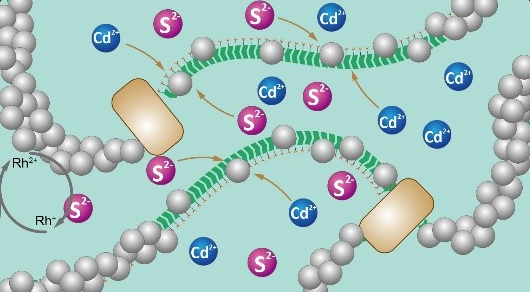
Living Hydrogel-based Miniaturized and Portable Bio-battery for Precise Nerve Stimulation
A research team led by ZHONG Chao, LIU Zhiyuan, and WANG Xinyu from the Shenzhen Institutes of Advanced Technology (SIAT) of Chinese Academy of Sciences, in collaboration with WANG Renheng from Shenzhen University, has developed a miniaturized, portable bio-battery measuring 20 millimeters in diameter and 3.2 millimeters in height. This innovative device integrates a bioelectric stimulation mechanism, enabling precise control over bioelectrical stimulation and physiological blood pressure signals. It showcases significant potential for applications in disease treatment.
Their study, published in Advanced Materials, advancing the development of portable bio-devices while expanding the research frontiers in engineered living energy materials.
Bio-battery, constructed by electroactive microorganisms, exhibit unique advantages in physiological monitoring, tissue integration, and powering implantable devices due to its superior adaptability and biocompatibility. However, the realization of miniaturized and portable bio-battery that are plug-and-play and compatible with existing devices remains a challenge.
In this study, the researchers encapsulated the Shewanella. oneidensis MR-1 biofilms within alginate hydrogels to develop living hydrogels, which can be 3-D printed into defined geometries for customized fabrication.
Inspired by lithium-ion battery fabrication, the researchers then developed a miniaturized bio-battery (20 mm diameter, 3.2 mm height) using living hydrogel as the bio-anode ink, K3[Fe(CN)6]-containing alginate hydrogel as the cathode ink, and a Nafion membrane as the ion exchange membrane. The bio-battery generated electricity from the metabolic activity of bacteria, enabling them with self-charging capabilities up to 10 cycles. They could also serve as pseudo-battery for charge/discharge cycles with the coulombic efficiency of over 99.5% across 50 cycles indicating lower energy losses. Impressively, the bacteria in the bio-battery maintained a high viability of over 70% across the entire process and 97.6% at the end of operation.
The bio-battery exhibited a specific capacity of 0.4 mAh g⁻¹, a maximum power density of about 8.31 µW cm⁻², and an energy density of 0.008 Wh/L. Although these values being lower than those of traditional lithium-ion batteries, the bio-battery provides a sustainable energy alternative by avoiding the use of critical raw materials (such as cobalt and lithium), as well as environmentally hazardous components (such as manganese and organic electrolytes).
Furthermore, the researchers explore the application potential of bio-batteries in nerve stimulation. By targeting the sciatic and vagus nerve, they demonstrated precise control over bioelectrical stimulation and physiological blood pressure signals. This precise stimulation technique holds promise for developing novel physical therapy methods.
This study offers innovative solutions for the future development and application of sustainable energy.

Living hydrogels to prepare portable energy devices for neuron stimulation
File Download:
